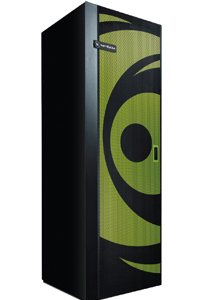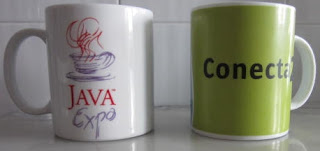I have always paid a lot of attention to the world of GIS and its applications. Today, ESRI is the major player dominating the world of GIS, thanks to its innovative products and understanding of the needs of its customers. This is why the announcement made in October by Esri and IBM-Netezza is so important. I'll try to explain here why and what it means.
One of the challenges of the systems handling geographical data is the analysis of that data when it reaches certain amount. While current databases can store as many terabytes of information as we need, and storage is becoming cheaper and cheaper, the problem arise when we need to analyze this data, as it takes a lot of resources and a lot of time -not only analyzing it, also moving the data-, making some analysis just impossible to perform. What usually happens is that customers only analyze samples of data, so the results achieved are not satisfactory at all.
This is when Netezza and ESRI partner together to find a solution to this problem. When you put together the leader in data-warehouse analysis and the leader in GIS solutions, something wonderful has to come out!
This announcement brings you the promise of an easy way of analysis of massive amounts of geospatial data and all in a timely fashion. But, this is something you already can achieve with Netezza...
So, what does all it mean? I'll try to explain it in detail, answering some typical questions.
What about Netezza and Spatial data, does Netezza support it?
Yes, Netezza is able to store spatial data, as it uses the Open Geospatial Consortium Simple Feature Specification. So, Netezza is able to store and understand natively spatial data: point, lines, polygons, multipoint, multiline, multypolygon...
What about Spatial Functions?
Today you can find about 90 spatial operations included in Netezza, executed as any other SQL function, but taking profit of the massive parallel multiprocessor architecture of Netezza. In upcoming versions, the number and complexity of functions, as long as the kind of spatial data stores, will increase.
So, does it work only with ESRI?
Not only with ESRI, as it is a standard implementation, it works with any GIS that fulfills the standard, including opensource products, but the relation with ESRI is special.
Why is the relation with ESRI Special?
The relation with ESRI is a long term one, as ESRI supports Netezza as data storage from a long time, and ESRI provides a native connector for Netezza (ArcView, ArcCatalog, etc.).
Ok, but, what is the cost of it?
There is no additional cost. It is included in Analytics, and Analytics is included in Netezza. You buy Netezza, and it is all included, at no additional cost: Analytics and Spatial. No hidden costs, no surprises.
So, what are ESRI and IBM-Netezza announcing?
 A very interesting advance in geospatial analysis. So far, ESRI or any other GIS software can use Netezza as a repository of their data, taking advantage of the astounding speed Netezza provides serving queries. But, in this case, what ESRI and IBM are announcing is the inclusion of several ESRI libraries into the Analytics package of Netezza. This way, instead of extracting data from Netezza and then perform the complex calculations in the server containing the ESRI software, part of those calculations can be done in-database, inside Netezza, as it already will contain the libraries and functions to be performed by ESRI: at the end of the day, Netezza is a kind of parallel supercomputer, so, why not taking advantage of it? And what is more interesting, at no additional cost.
A very interesting advance in geospatial analysis. So far, ESRI or any other GIS software can use Netezza as a repository of their data, taking advantage of the astounding speed Netezza provides serving queries. But, in this case, what ESRI and IBM are announcing is the inclusion of several ESRI libraries into the Analytics package of Netezza. This way, instead of extracting data from Netezza and then perform the complex calculations in the server containing the ESRI software, part of those calculations can be done in-database, inside Netezza, as it already will contain the libraries and functions to be performed by ESRI: at the end of the day, Netezza is a kind of parallel supercomputer, so, why not taking advantage of it? And what is more interesting, at no additional cost.If you want to download a paper describing Spatial in detail, follow this link, and register for free.
Impressed? You could be more impressed, as you may ask for a trial for free (or just call your local IBM-Netezza representative).
As Netezza says: your data, your facilities, our appliance.











